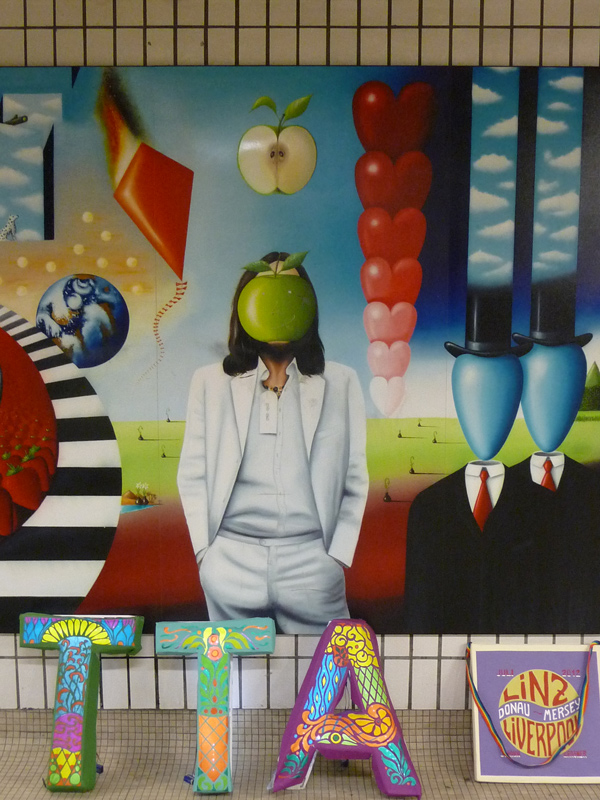July 12, 2012, gas station on the Autobahn in Ansfelden, about 7:30 AM. There wasn’t much time for picture taking, ‘cause it wasn’t long before I was enjoying a pleasant chat with a young lady in her car on the way to Schärding.
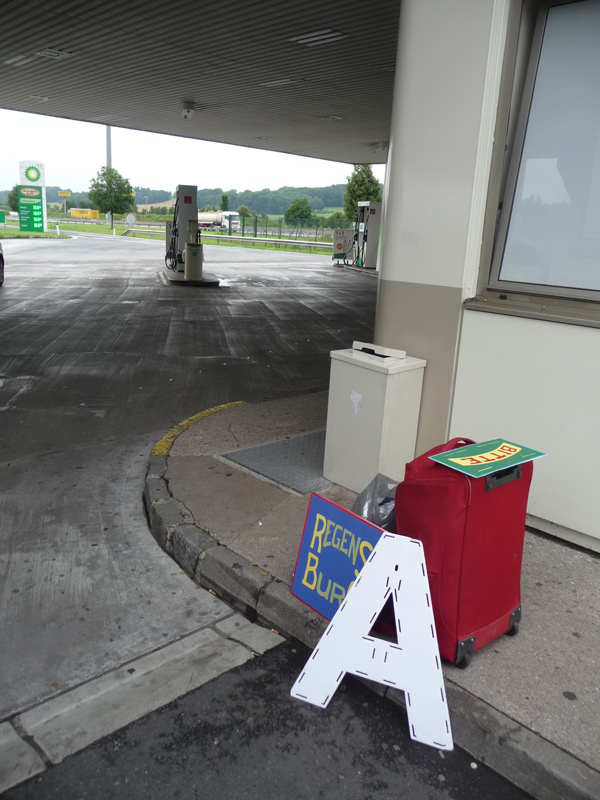
Liverpool: George Harrison had his point of view, one that was precise and spot on. So was C.G. Jung’s perspective, culminating in the observation that Liverpool is the Pool of Life! This can be supplemented by quoting poet Allen Ginsberg: Liverpool is the center of the consciousness of the human universe.
Aachen Land Nord, my Day 1 dream destination
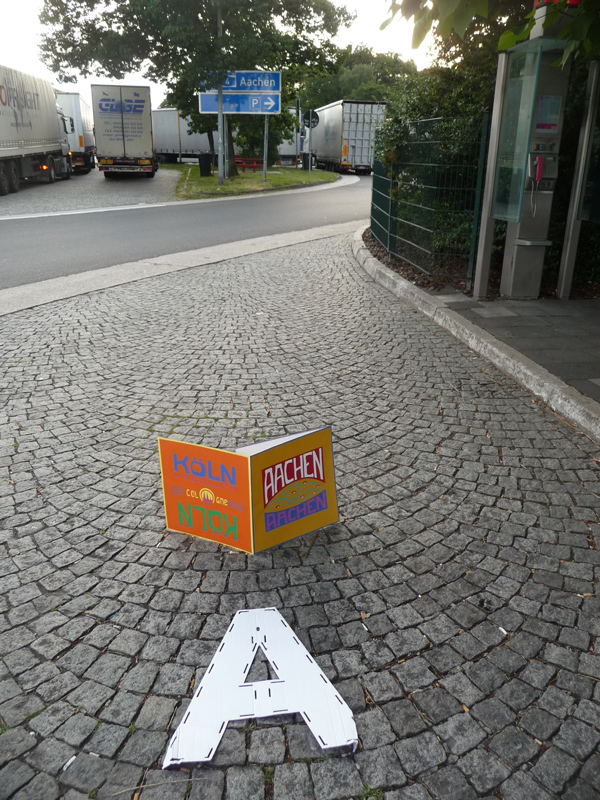
Liverpool: This city is full of the magic of much that’s possible. And of a lot of whatever else there is to boot.
In the Catholic cathedral, the Metropolitan Cathedral of Christ the King. Due to its tent-like shape and the Irish ethnicity of many of its congregants, it’s affectionately referred to as Paddy’s Wigwam (an allusion to St. Patrick, the patron saint of Ireland).

Seven years ago on the occasion of my 50th birthday, I gave myself a present: a hitchhiking trip to the English Midlands–to the island’s Pottery Belt, home of Wedgewood, Spode, Royal Doulton and other purveyors of the so-called white gold. “Liverpool, that’s the more exciting place. Even more interesting than London!” That’s what I was told by a manager who gave me a ride to Chester and was astonished that I didn’t intend to travel on to Liverpool. His advice planted a seed.
Anglican cathedral with the largest interior space of any church in Europe, view of the high altar. Here, we find that telephone booth designed in the 1930s that came to epitomize England for decades. The smallest work by architect Giles Gilbert Scott thus stands inside his largest work. By the way, Scott was Catholic, whereas Edwin Lutyens, the original architect of the Catholic cathedral, was an Anglican.

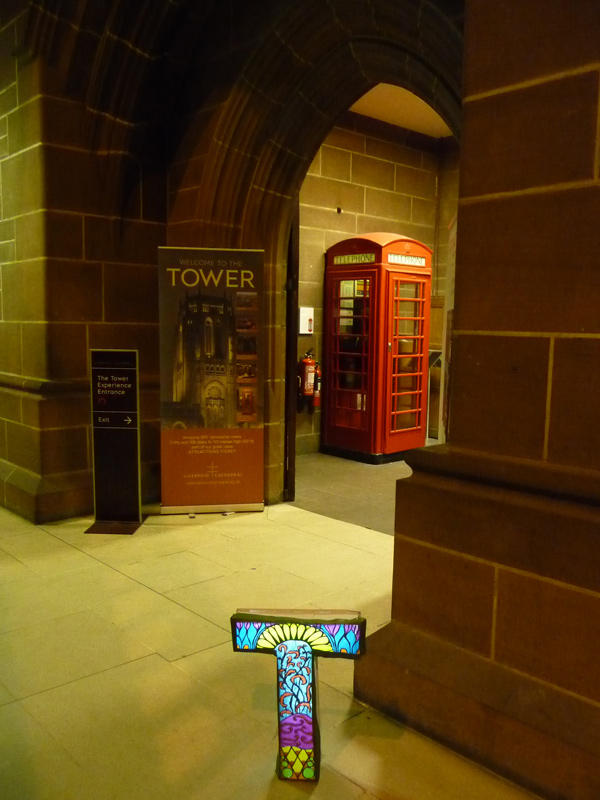
A few days later, an electrician spotted me walking with my LIVERPOOL sign down a side street in Chester, made a U-turn, pulled up alongside and invited me to join him on a ride to the Royal Liver Building on Pier Head. There he explained The Three Graces to me. Enthusiasm, magical words, fire and color pervaded his excursion through the imaginary history of English art, as well as his recommendations of the Walker, Tate and Lady Lever Gallery. All I had to do at this point was to pass through the entrance!
PS: The term The Three Graces refers to three buildings: Royal Liver, Cunard and The Port of Liverpool headquarters. The Pottery Belt is where fine English porcelain, china and ceramics are produced.
This year, I took along four AEC letters in my suitcase, a part of a project that came up on the spur of a moment when all was right with the world a few days prior to my planned departure. The letters spelled out the name of the famous modern art gallery on Albert Dock: TATE. And thus ETTA, TAT, EAT, TEA and ATE just as impeccably.
In front of the destination of the journey
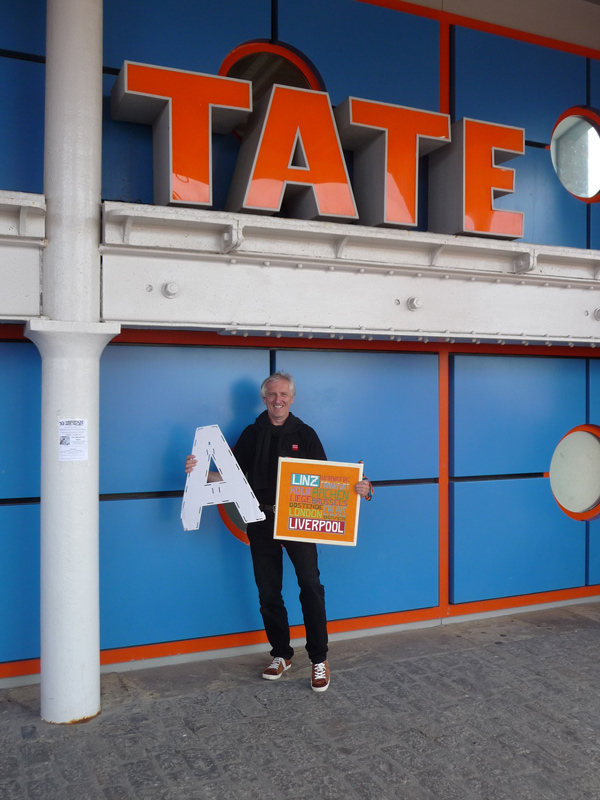
I prepared the letters’ decoration of colored tissue paper in an intense burst of creativity the night before I was to leave. Due to logistical constraints, I planned to delay final assembly until I reached Liverpool, and, conversely, before the return trip, dismantle them. Or rather what was left once the elements got done softening them up.
High winds and frequent (incessant) rain made certain planned actions impossible or forced me to stage them with single letters at locations sheltered from the wind. I was buffeted by hefty gusts going to and from the site of the first photo shoot on Pier Head (a kilometer in both directions), which made it pretty much impossible to set up the objects to be captured. The damage to the tissue paper was considerable; the colored parts of the A and E were goners. The rain and wind during a late-evening photo safari in front of the Catholic cathedral and the seawater roiling around the New Brighton lighthouse radically reconfigured one T. The previous train rides to Port Sunlight and New Brighton had done much to diminish the letters’ brand-new sheen. But in the wake of this latest pounding, the repairs & maintenance I had performed after the initial wear & tear no longer seemed to make much sense.
In Front of the Museum of Liverpool: Superlambananas

I found these actions to be especially stimulating because they were conducive to interaction with passers-by ranging from the quite interested to the totally enthused, encounters with young people who—sometime at night, somewhere way off the beaten path—rode their bikes over to me to ask about how the letters were constructed and the object of my activities, and to give me their new impressions and views of places and buildings. Doing it just for the sake of doing it.
On each of my previous hitchhiking trips, I took a small art project with me: painting actions, fairy tale telling sessions for kids in parks or by prearrangement with tourism associations in Germany. For me, travel essentially means exploring new possibilities, condensing this mobility with people, stories and images so as to engender new ways of seeing things. “A good trip means being enriched by people, mountains, cities. Whoever comes back home as the same person he was when he left has only changed locations, not himself too.” That’s approximately what Ernst Bloch wrote in “Spuren” (traces). And that’s putting it well.
New Brighton across from Liverpool on the Wirral peninsula, where the Mersey becomes the Irish Sea.

Two photo opportunities came up during the return trip. The first came in Dover, out on White Cliffs Walk with a view of the ferry harbor, the cliffs and the endless sky. An art student from town was in the process of doing a Polaroid photo project. He captured me with his camera as I took him with mine. The Ludwig Museum was likewise a most suitable setting.
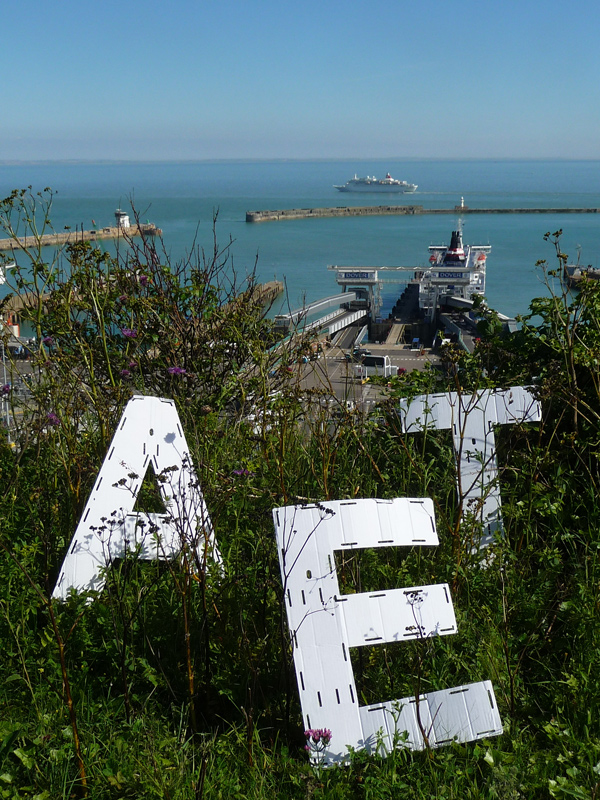

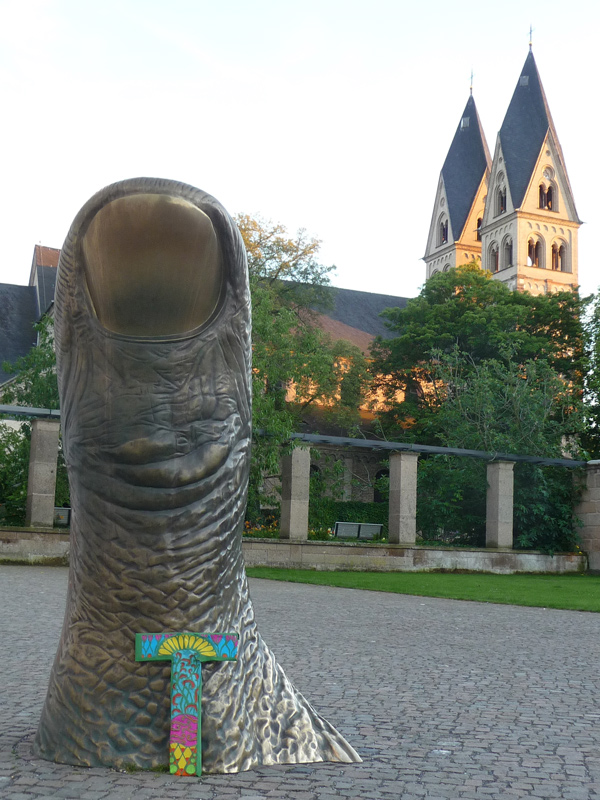
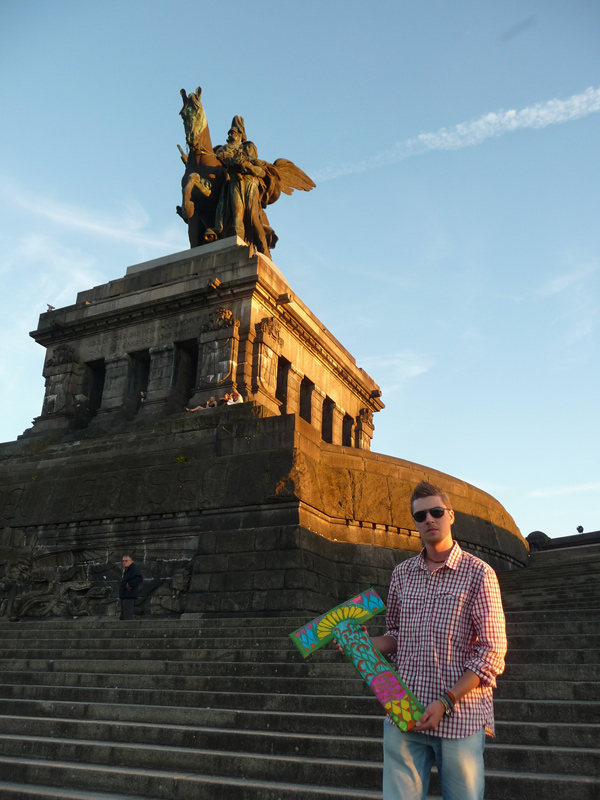
At a rest area near Frankfurt, I asked an Englishman if I could ride with him towards Nürnberg and he ended up taking me all the way to Linz. Taking leave of him in Ansfelden, I offered him all the British pounds I had left. “No, I never would take any money from you. Keep it for next year!” It almost sounded like an assignment ….

